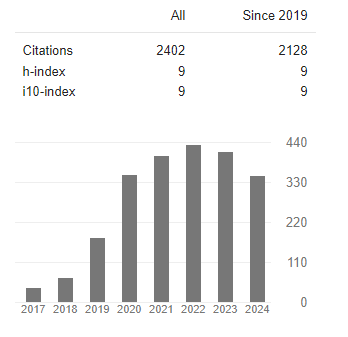The Role of Ferroptosis in Major Depressive Disorder
Abstract
Ying Li, Peidong Miao, Fang Li, Jinsong Huang, Lijun Fan and Yunan Zhang
Objective: To study the relationship between ferroptosis genes and Major Depressive Disorder (MDD).
Methods: The GEO database was utilized to obtain chip data and clinical information from three datasets, namely GSE98793, GSE39653, and GSE52790. To identify differentially expressed ferroptosis genes, an analysis was conducted on genes that showed differential expression between individuals with Major Depressive Disorder (MDD) and healthy controls. Subsequently, Gene Ontology (GO) and Kyoto Encyclopedia of Genes and Genomes Pathway (KEGG) enrichment analyses were performed on the differentially expressed ferroptosis genes. Screening of these genes was carried out using the Lasso Regression and Support Vector Machine (SVM) methods. A diagnostic model for depression was established using logistic regression with the screened genes. The model was validated using Receiver Operating Characteristic (ROC) Curve analysis. Furthermore, the Gene Set Enrichment Analysis (GSEA) method was applied to analyze the genes included in the model. The immune infiltration of MDD and healthy controls was assessed using the Cibersort method, along with an analysis of the correlation between immune cells and ferroptosis genes. The ferroptosis gene interaction network was examined using Cytoscape software. Additionally, the DGIdb website was consulted to predict potentially effective therapeutic drugs for ferroptosis genes closely associated with MDD.
Results: A total of 18 genes involved in ferroptosis were identified through differential expression analysis comparing individuals with major depressive disorder (MDD) and healthy controls. Enrichment analysis, including GO and KEGG, revealed concentrated pathways related to oxidative stress response, hydrogen peroxide response, reactive oxygen species response, FoxO signaling pathway, fluid shear stress, and atherosclerosis. To identify key genes related to ferroptosis in MDD, Lasso regression and SVM techniques were employed, resulting in the selection of 10 genes. The depression diagnostic model, which utilized these 10 genes, achieved an area under the curve (AUC) of 0.773. The Gene Set Enrichment Analysis (GSEA) focusing on individual genes demonstrated that Parkinson's disease, Huntington's disease, and oxidative phosphorylation pathways were highly enriched. The analysis of immune infiltration further revealed significant differences in the resting NK cells and M2 macrophages between individuals with MDD and control subjects. Specifically, PHF21A was found to be closely associated with resting NK cells in MDD, whereas METTL14 and MAPK14 were closely related to M2 macrophages. The RNA interactions network of ferroptosis genes indicated a complex regulatory process, providing valuable insights for future research in this field. In terms of potential therapeutic options, ALOX15B, MAPK14, PRKAA1, and MICU1 among the 10 ferroptosis-related genes were found to have potential for effective therapeutic drugs.
Conclusion: Among all ferroptosis genes, ALOX15B, MAPK14, PRKAA1, PHF21A, MICU1, KLF2, METTL14, TP63, PARK7, PARP4 are closely related to MDD and have diagnostic value. Among them, ALOX15B, MAPK14, PRKAA1 and MICU1 may have potential effective therapeutic drugs.




